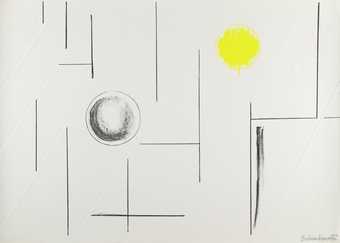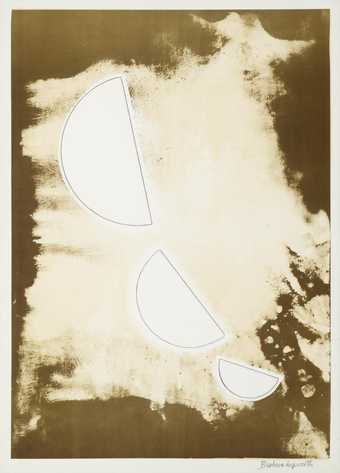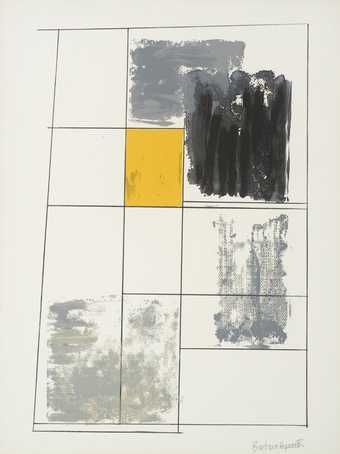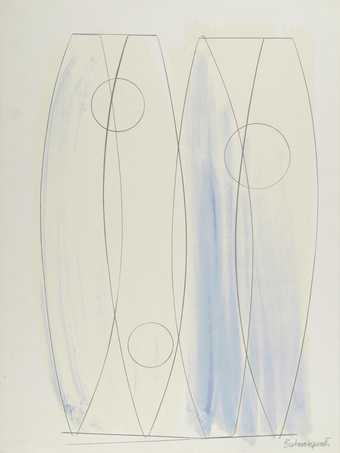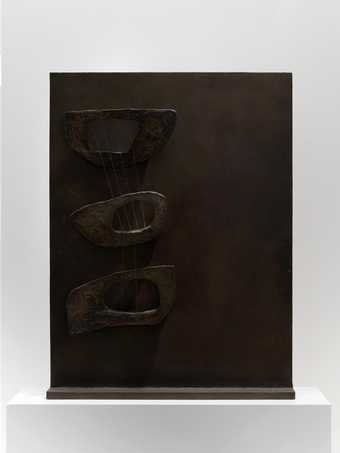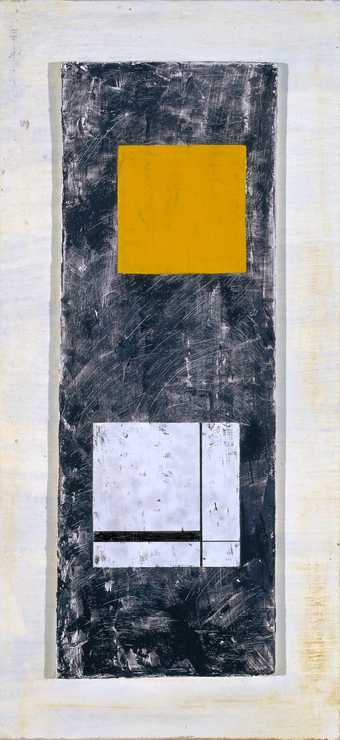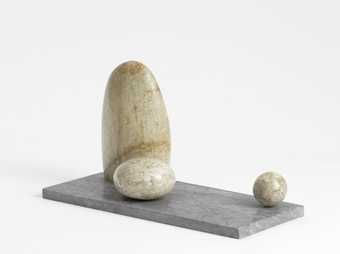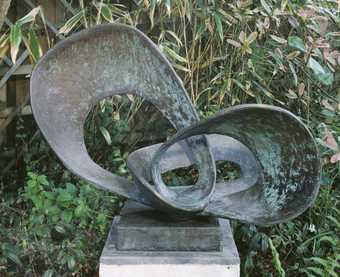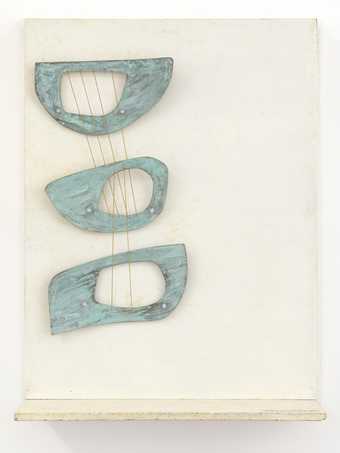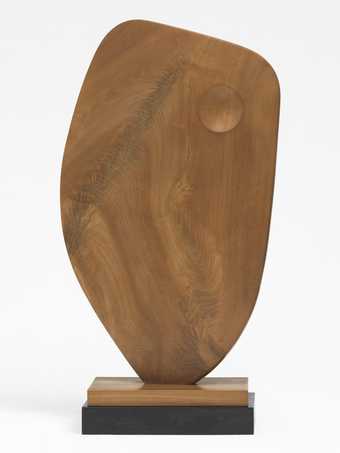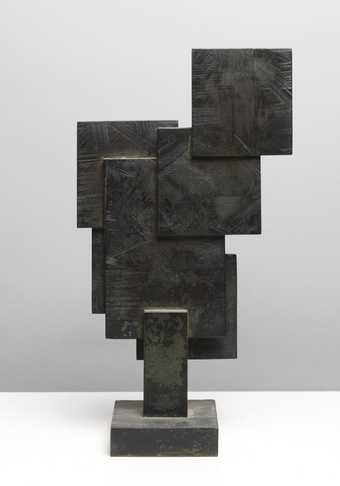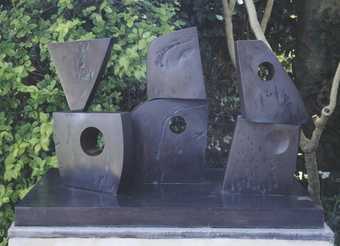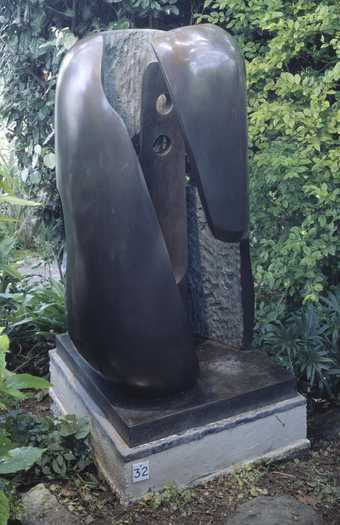
In Tate St Ives
- Artist
- Marlow Moss 1889–1958
- Medium
- Metal and granite
- Dimensions
- Object: 220 × 330 × 285 mm
- Collection
- Tate
- Acquisition
- Presented by Miss Erica Brausen 1969
- Reference
- T01114
Display caption
Marlow Moss, born Marjorie Moss, studied briefly at the Slade School and then at Penzance Art School in Cornwall. In 1927 after a short but crucial visit to Paris, in which she was overwhelmed by the work of the painter Piet Mondrian, she broke off connections with England and went to live and work in Paris. She made contact with Mondrian then and subsequently became a pupil of Léger and Ozenfant. With the advent of the Second World War Moss fled from France and returned to Cornwall. There she made abstract paintings in pure colours and some geometric sculptural compositions, of which this is a rare example.
Gallery label, September 2004
Does this text contain inaccurate information or language that you feel we should improve or change? We would like to hear from you.
Catalogue entry
T01114 BALANCED FORMS IN GUNMETAL ON CORNISH GRANITE 1956–57
Not inscribed.
Polished gunmetal on granite, 10 1/4×12 3/4×10 3/4 (26×32·5×27·5)
Presented by Miss Erica Brausen 1969.
Coll: Miss Erica Brausen from 1958.
Exh:
Hanover Gallery, March–April 1958 (16, repr. in an earlier state).
The photograph on the cover of the exhibition catalogue cited shows the three metal elements of T01114 (a sphere, and a cone mounted on a pierced sphere) mounted on a piece of granite smaller than and quite different in shape from the present piece. Also the nearly conical void in the larger sphere is shown facing in a different direction in relation to the smaller sphere. Mr Jean-Yves Mock wrote on behalf of Miss Brausen (2 May 1969): ‘Marlow Moss, a week before the exhibition started, was not completely happy with the base of “Balanced Forms in gunmetal on Cornish Granite”, and having just found a beautiful series of stones in St. Ives, changed after the photograph had been taken the existing base for the one which is now part of the composition’. The spheres, set in position by means of screws through the granite, cannot be moved except with tools and have remained since March 1958 in the rotational positions fixed by the artist. The cone pivots freely through an arc of approximately 110°; the dimensions of the sculpture are therefore variable, those given above being taken with the cone reaching its maximum possible height, and the dimensions when the cone is at the two extremes of its arc being 8 5/8×14×11 1/4 (22×35·5×28·5) and 10 1/4×12 3/4×10 3/4 (26×32·5× 27·5).
In her essay on Marlow Moss in the catalogue of the retrospective exhibition at the Stedelijk Museum, Amsterdam in 1962, A H Nijhoff wrote that Marlow Moss: ‘discovered, as she expressed it, that the secret of form lies not in form itself but in the continual changing and shifting of forms. This constant transformation was, for her, the vital process of “becoming”... For her, the transitory was part of the process of evolution’.
Published in:
The Tate Gallery: Acquisitions 1968-9, London 1969
Explore
- abstraction(8,615)
-
- non-representational(6,161)
-
- geometric(3,072)
You might like
-
Dame Barbara Hepworth Sea Forms
1969 -
Dame Barbara Hepworth Desert Forms
1971 -
Dame Barbara Hepworth Assembly of Square Forms
1970 -
Dame Barbara Hepworth December Forms
1970 -
Dame Barbara Hepworth Maquette, Three Forms in Echelon
1961 -
Dame Barbara Hepworth Two Forms (White and Yellow)
1955 -
Dame Barbara Hepworth Three Forms (Carving in Grey Alabaster)
1935 -
Dame Barbara Hepworth Forms in Movement (Pavan)
1956–9, cast 1967 -
Dame Barbara Hepworth Maquette, Three Forms in Echelon
1961 -
Dame Barbara Hepworth Single Form (September)
1961 -
Dame Barbara Hepworth Square Forms
1962 -
Dame Barbara Hepworth Six Forms (2 x 3)
1968 -
Dame Barbara Hepworth Hollow Form with Inner Form
1968 -
Dame Barbara Hepworth Two Forms (Divided Circle)
1969 -
Dame Barbara Hepworth Vertical Form (St Ives)
1968, cast 1969

